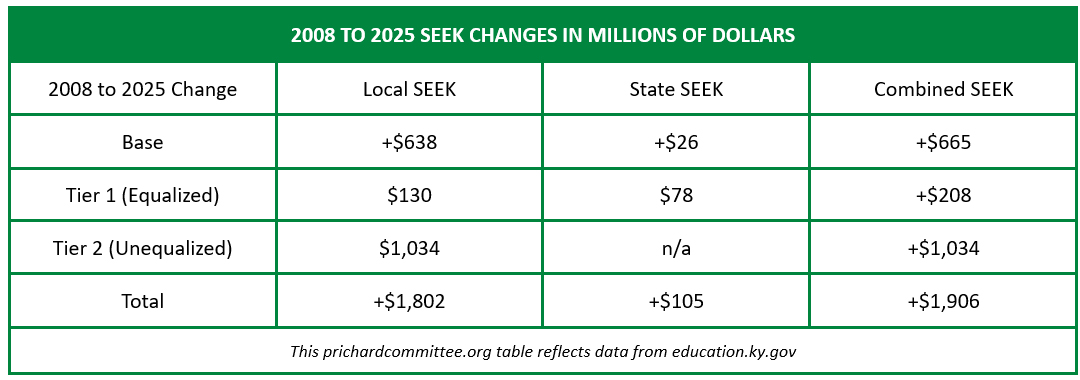December 8, 2022
FOR IMMEDIATE RELEASE
For More Information Contact:
Brigitte Blom, President and CEO
brigitte@prichardcommittee.org
Big Bold Future: 2022 National Rankings Report Released
Prichard Committee Board of Directors Meet, Launch Center for Best Practice & Innovation to Improve Metrics
Lexington, KY – Out of the quarterly board of director’s meeting Wednesday, the Prichard Committee for Academic Excellence released the next biannual report on Kentucky’s progress in education. The Big Bold Future National Rankings report was released first in 2020 after a similar report produced by the Committee, Top 20 by 2020, ended.
The Big Bold Future report includes 12 indicators across 4 areas: early childhood, K12 education, postsecondary, and quality of life. They allow Kentuckians to track Kentucky’s outcomes relative to other states, analyze trends over the years, see results for Kentuckians of varied backgrounds, find cause for celebration, and to recognize areas of concern.
The 2022 Big Bold Future report shows the following rankings for Kentucky in the top 20.
- 3rd in high school graduations
- 6th in two-year postsecondary graduations
- 15th in voter turnout (a proxy for community engagement)
The report also shows areas of significant concern where Kentucky’s ranking has fallen in recent years.
- 29th in grade 4 reading (KY’s lowest rank since 50 state NAEP participation began)
- 41st in grade 8 mathematics
- 43rd children above 200% of poverty
- 38th preschool participation
- 41st postsecondary enrollment
- 43rd overall associate degree or higher attainment
- 44th median household income
“We expected decline in Kentucky’s rankings coming out of the COVID years, but to be frank, we were seeing declines in these metrics, and sounding the alarm, YEARS before COVID,” said Brigitte Blom, President & CEO of the Prichard Committee. “To return to a place where these metrics are moving in the right direction, we need the General Assembly to follow through in the last year of the Big Bold Ask to realize the additional $1 billion annually invested strategically into education and we need local communities galvanized to improve local metrics.”
On the heels of the Big Bold Future metrics release, the Committee also announced the launch of the Center for Best Practice & Innovation which is designed to be a hub of people, resources, and data which community leaders across the state can use to improve state and local metrics in education. The Center for Best Practice & Innovation will join the Committee’s existing initiative, the Kentucky Collaborative for Families and Schools, to support and network local community efforts to improve outcomes for students and families.
“Prichard Committee members have taken local action to heart, creating after-school mentoring and tutoring programs, strengthening early learning systems locally, designing reading initiatives, educating students about scholarships and grants for college tuition, the list goes on,” said Blom. “As we continue to push for improvement in our state, embracing local innovation and entrepreneurial thinking will be necessary to produce stronger and more effective results for students and families, community by community. Each community success story will spark hope — together they will have far-reaching ripple effects in communities and across the state, ultimately resulting in improvement on the metrics – and a Big Bold Kentucky Future.”
Full report can be found at www.prichardcommittee.org/Big-Bold-Future
###
The Prichard Committee for Academic Excellence is an independent, nonpartisan, citizen-led organization working to improve education in Kentucky – early childhood through postsecondary.












